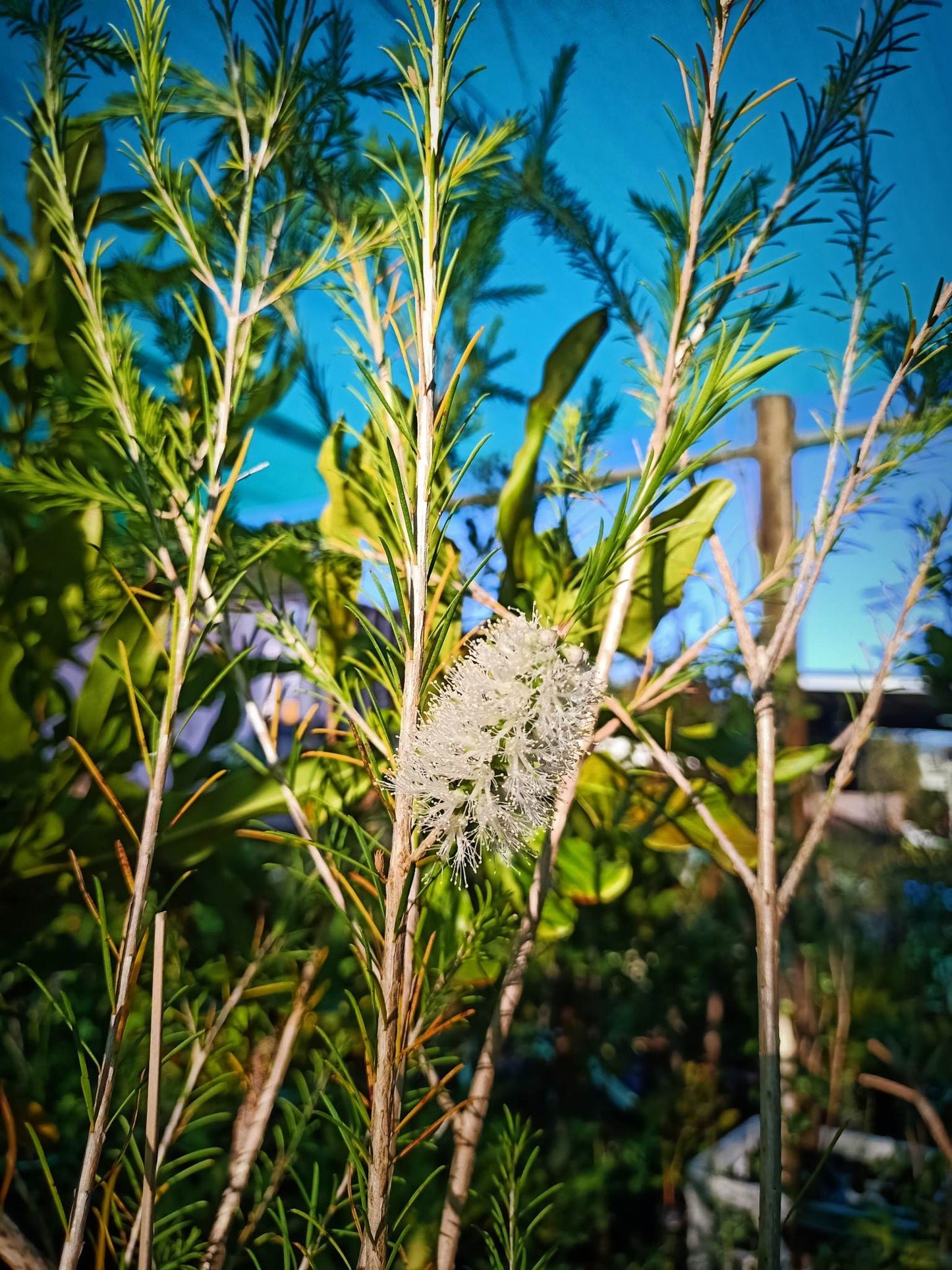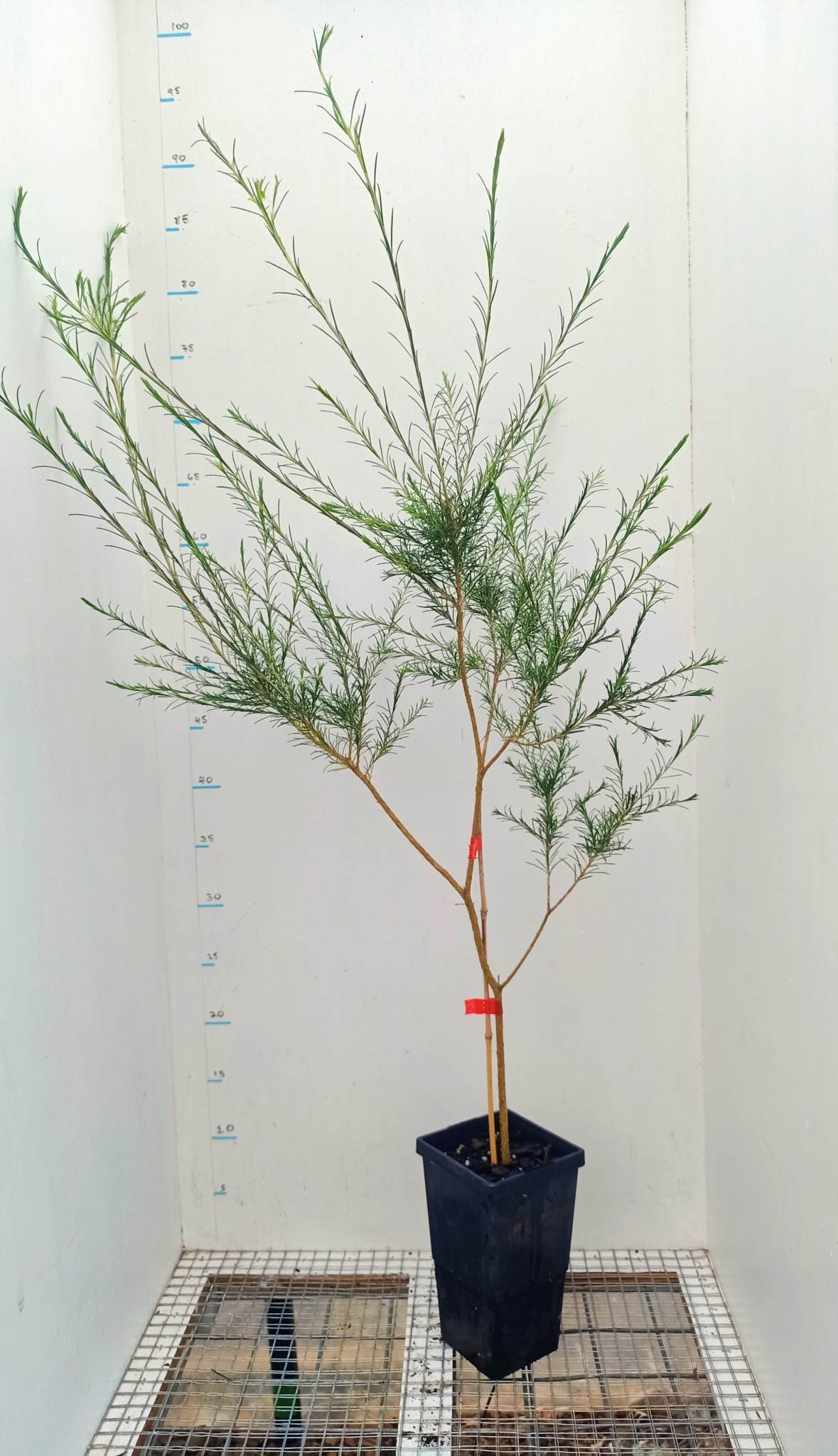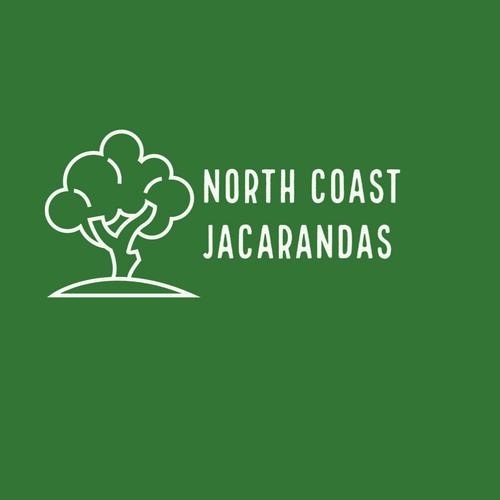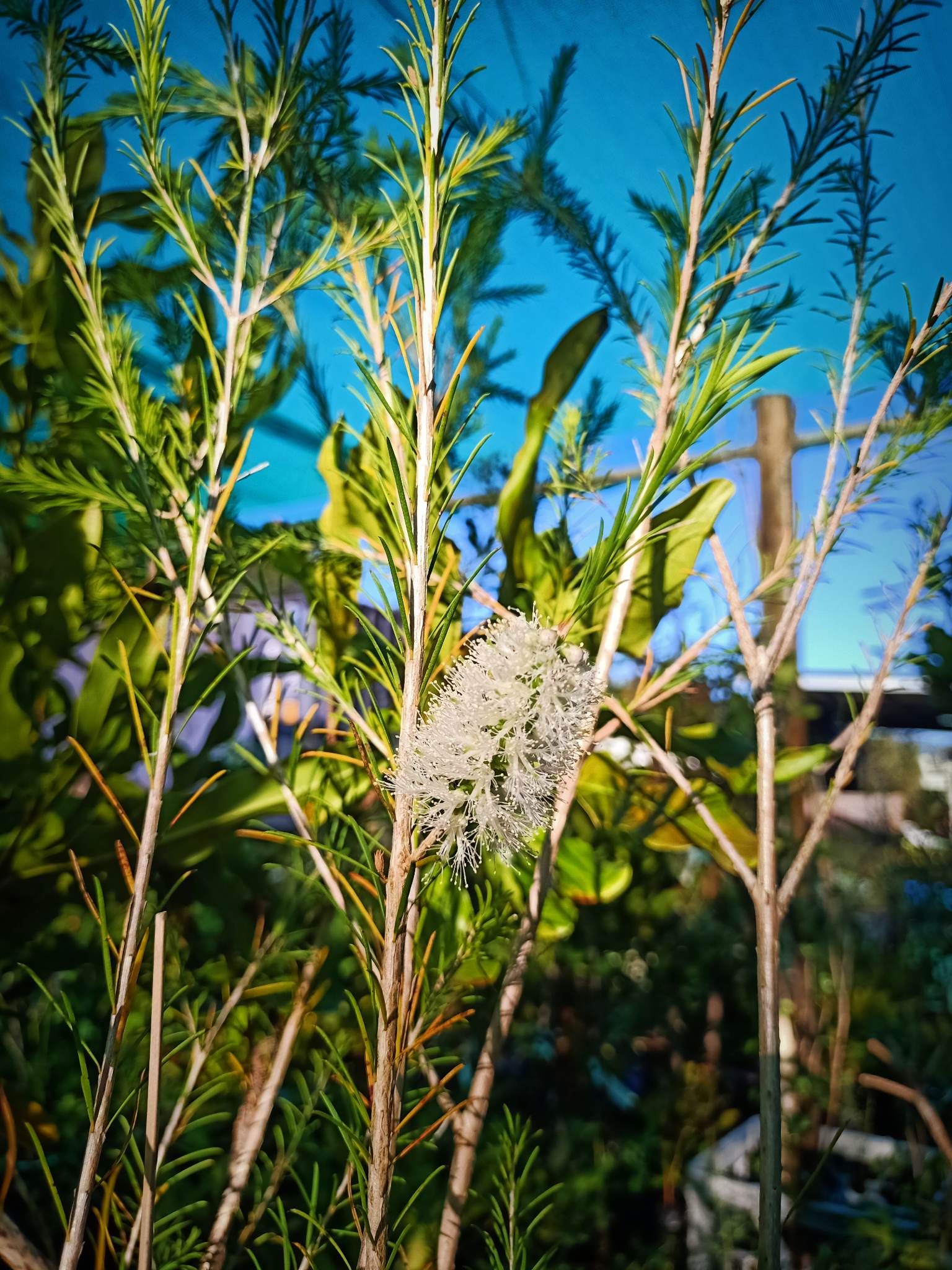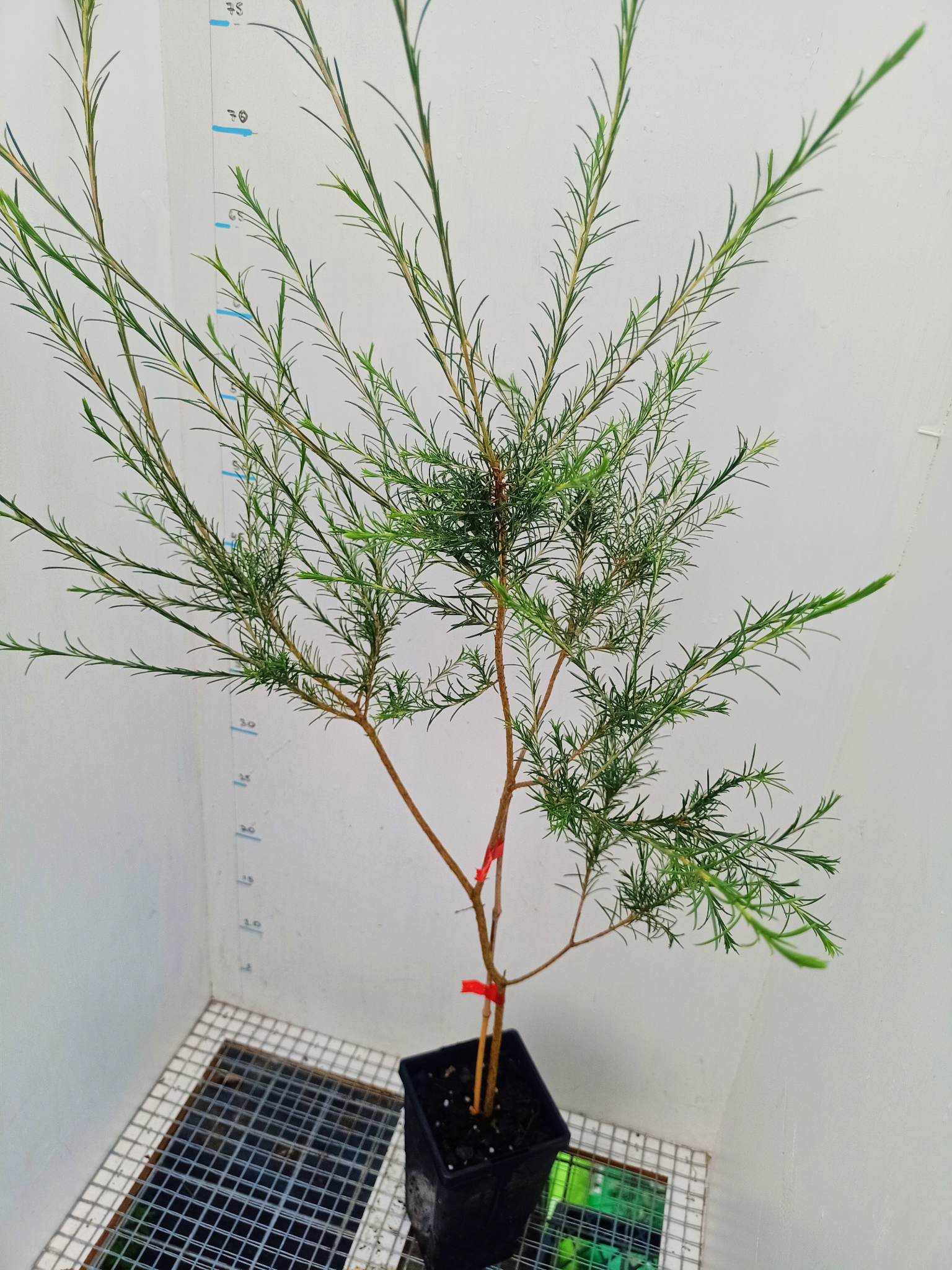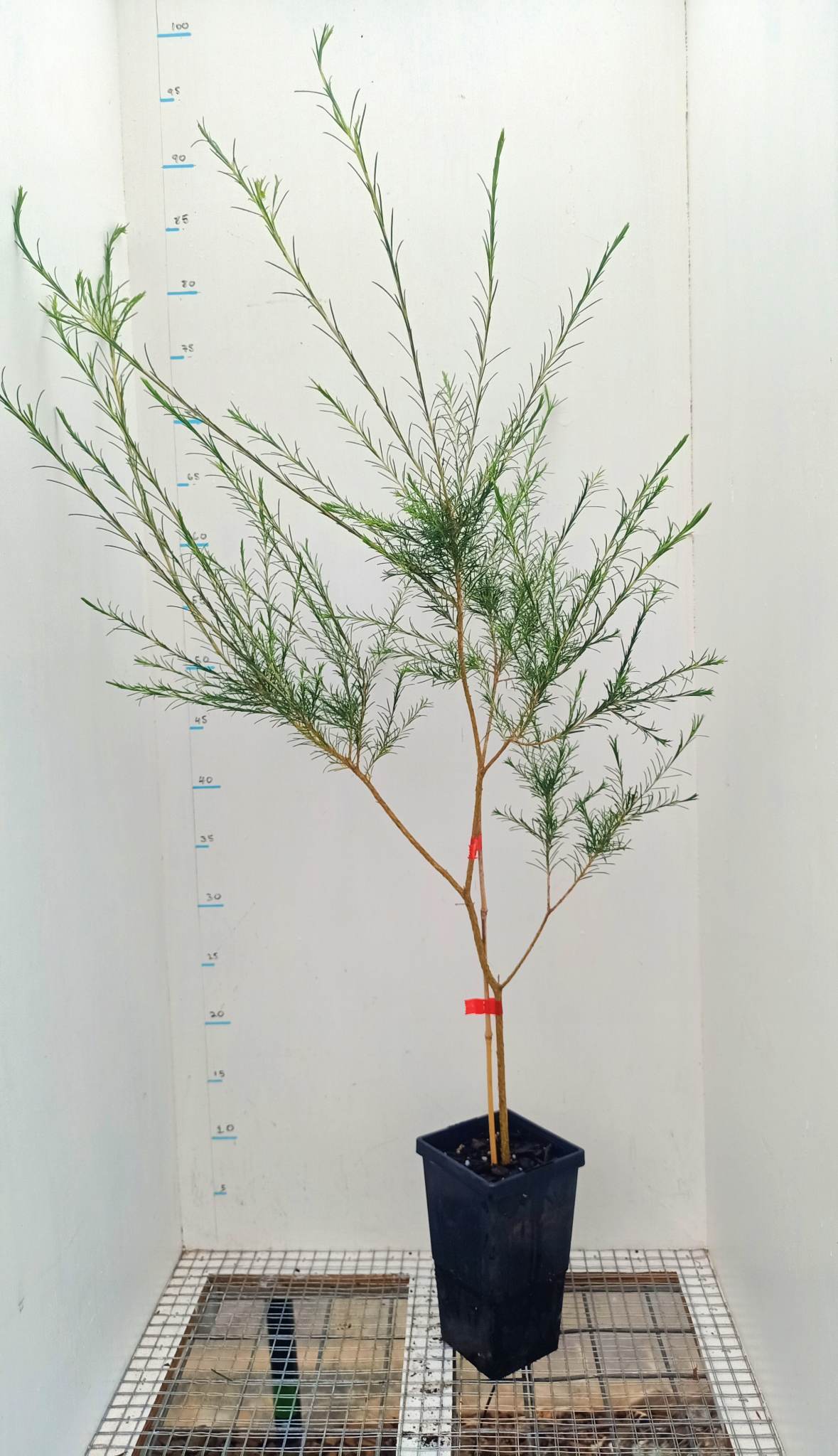North Coast Jacarandas
Bracelet Honey Myrtle - Melaleuca armillaris
Bracelet Honey Myrtle - Melaleuca armillaris
Couldn't load pickup availability
Common Name: Bracelet Honey Myrtle
Scientific Name: Melaleuca armillaris
Family: Myrtaceae
Description: Bracelet Honey Myrtle is a small to medium-sized tree or shrub that can grow up to 4 meters in height. It has a dense, bushy growth habit with fine, needle-like leaves that are about 10-20mm long. The flowers are creamy-white, bottlebrush-like, and appear in summer to autumn. The bark is smooth and pale grey, and as the tree matures, it develops a distinctive mottled, peeling bark.
Distribution and habitat: Bracelet Honey Myrtle is native to Australia and is found in a variety of habitats, including woodlands, heathlands, and sand dunes. It is distributed across New South Wales, Victoria, South Australia, and Western Australia.
Cultivation: Bracelet Honey Myrtle is a hardy plant that is easy to grow and can tolerate a range of soils and conditions, including sandy, clay, and loam soils. It prefers full sun but can tolerate partial shade. It is drought tolerant once established, but regular watering will promote better growth and flowering. Pruning can be done to maintain its shape and promote bushiness.
Uses: Bracelet Honey Myrtle is a popular plant in gardens and landscaping due to its attractive foliage, flowers, and bark. It can be used as a specimen plant, hedge, or screen. It also attracts birds and insects, making it an excellent choice for wildlife gardens. The leaves and twigs of Bracelet Honey Myrtle contain essential oils that are used in aromatherapy and for medicinal purposes, including treating skin conditions, respiratory ailments, and infections. The wood of the tree is also used for firewood and woodworking.
Free express shipping
Due to box limitations and to ensure safe shipment, all trees available for purchase at North Coast Jacarandas may be subject to pruning before delivery. This process encourages the formation of new buds, facilitating the successful establishment of your tree upon arrival.
